Scottish Water delivers vital water and wastewater services in Scotland and uses 576GWh pa of electricity, leading to 160ktCO2e pa.
We currently generate and consume 53GWh of renewable electricity on our assets, displacing
the use of grid electricity.
We also host renewable generation of 831GWh per annum for others on our land. This is exported to the National Grid, supporting UK emissions. We aim to significantly increase this, playing our part in supporting a flourishing Scotland.

2019/20 POSITION
GRID ELECTRICITY
USAGE
HOSTED RENEWABLE ELECTRICITY EXPORTED TO GRID
TOP 5 CONTRIBUTORS TO
ELECTRICITY CONSUMPTION
29%
WASTE WATER PUMPING
WASTE WATER SLUDGE TREATMENT

MAXIMISE ENERGY
RECOVERED
FROM BIORESOURCE
GENERATE OR
HOST ON SITE
These tables illustrate the key activities we are exploring to reduce our electricity emissions.

UP TO
2025
• Identify, assess and implement energy efficiency opportunities (e.g. real time control).
UP TO
2030
• Implement energy efficiency opportunities, adapting emerging technologies.
UP TO
2040
• Implement further energy efficiency opportunities.
• All new equipment we replace to be more energy efficient.
• All new equipment we replace to be more energy efficient.
• All new equipment we replace to be more energy efficient.
• Identify, assess and implement new more energy efficient treatment technologies.
• Implement new more energy efficient treatment technologies.
• Further development of new more energy efficient treatment technologies.
• Demonstrate potential for use of analytics in pump control and water production planning.
• Implement at scale
new digital demonstrators.
• Implement at scale further new digital demonstrators.
• Identify, assess and implement leakage and per capita consumption reduction opportunities.
• Implement leakage and per capita consumption reduction opportunities.
• Implement further leakage and per capita consumption reduction opportunities.
• Demonstrate the energy efficiency impact of stormwater removal from the wastewater network.
• Implement stormwater removal from the wastewater network.
• Implement further stormwater removal from the wastewater network.

UP TO
2025
• Identify, assess and implement energy efficiency opportunities (e.g. real time control).
• All new equipment we replace to be more energy efficient.
• Identify, assess and implement new more energy efficient treatment technologies.
• Demonstrate potential for use of analytics in pump control and water production planning.
• Identify, assess and implement leakage and per capita consumption reduction opportunities.
• Demonstrate the energy efficiency impact of stormwater removal from the wastewater network.
UP TO
2030
• Implement energy efficiency opportunities, adapting emerging technologies.
• All new equipment we replace to be more energy efficient.
• Implement new more energy efficient treatment technologies.
• Implement at scale
new digital demonstrators.
• Implement leakage and per capita consumption reduction opportunities.
• Implement stormwater removal from the wastewater network.
UP TO
2040
• Implement further energy efficiency opportunities.
• All new equipment we replace to be more energy efficient.
• Further development of new more energy efficient treatment technologies.
• Implement at scale further new digital demonstrators.
• Implement further leakage and per capita consumption reduction opportunities.
• Implement further stormwater removal from the wastewater network.
DEVELOP ZERO EMISSIONS LEAKAGE
FIND AND FIX OPTIONS
DEVELOP NEW ANALYTICS/DIGITAL TOOLS
TO REDUCE ENERGY CONSUMPTION
DEVELOP AND DEMONSTRATE WASTEWATER
ANAEROBIC TREATMENT, REMOVING THE
NEED FOR AERATION
DEVELOP ZERO EMISSIONS LEAKAGE FIND AND FIX OPTIONS
DEVELOP NEW ANALYTICS/DIGITAL TOOLS TO REDUCE ENERGY CONSUMPTION
DEVELOP AND DEMONSTRATE WASTEWATER ANAEROBIC TREATMENT, REMOVING THE NEED FOR AERATION
DEVELOP ZERO EMISSIONS LEAKAGE FIND AND FIX OPTIONS
DEVELOP NEW ANALYTICS/DIGITAL TOOLS TO REDUCE ENERGY CONSUMPTION
DEVELOP AND DEMONSTRATE WASTEWATER ANAEROBIC TREATMENT, REMOVING THE NEED FOR AERATION

UP TO
2025
• Study all Scottish Water assets and landbank for potential retrofit and hosting of renewable generation.
UP TO
2030
• Complete delivery of Phase 2 of renewables on our assets and land.
UP TO
2040
• Engage with market to understand opportunities to deliver and host renewables.
• Identify and implement partnerships to deliver renewables.
• Identify, assess and deliver phase 1 of renewable generation projects.
• Identify, assess and deliver options to maximise energy recovery from bioresources at Kinneil Kerse and Daldowie.
• Delivery of new solution at Daldowie to maximise energy recovery from bioresource.
• Maximise renewable generation from bioresource.
• Identify, assess and implement activities to maximise energy recovery from bioresource at former PFI assets.
• Demonstrate viability of co-digestion of sewage sludge and other waste streams.
• Implement co-digestion of sewage sludge and other waste streams.
• Technology scouting for innovative renewable energy technologies.
• Assess and demonstrate innovative renewable energy technologies.
• Implement at scale innovative renewable energy technologies.

UP TO
2025
• Study all Scottish Water assets and landbank for potential retrofit and hosting of renewable generation.
• Engage with market to understand opportunities to deliver and host renewables.
• Identify and implement partnerships to deliver renewables.
• Identify, assess and deliver phase 1 of renewable generation projects.
• Identify, assess and deliver options to maximise energy recovery from bioresources at Kinneil Kerse and Daldowie.
• Demonstrate viability of co-digestion of sewage sludge and other waste streams.
• Technology scouting for innovative renewable energy technologies.
UP TO
2030
• Complete delivery of Phase 2 of renewables on our assets and land.
• Delivery of new solution at Daldowie to maximise energy recovery from bioresource.
• Identify, assess and implement activities to maximise energy recovery from bioresource at former PFI assets.
• Implement co-digestion of sewage sludge and other waste streams.
• Assess and demonstrate innovative renewable energy technologies.
UP TO
2040
• Maximise renewable generation from bioresource.
• Implement at scale innovative renewable energy technologies.
INNOVATION
CHALLENGE
DEVELOP WAYS OF
MAXIMISING
ENERGY
RECOVERY FROM BIORESOURCE
KEY ENABLERS TO SUPPORT
REDUCING ELECTRICITY EMISSIONS
DECISION MAKING
Building emissions into our
decision making processes
PEOPLE CAPABILITY
Growing our people’s analytic
and digital capability
REVISING BUILDING
STANDARDS
To deliver water
efficient houses
ENGAGE APPLIANCE
MANUFACTURERS
To deliver water
efficient appliances
ENGAGE CUSTOMERS
To reduce customer side leakage
SUPPLY CHAIN
Developing energy
efficient equipment
KEY ENABLERS TO SUPPORT REDUCING ELECTRICITY EMISSIONS
DECISION MAKING
Building emissions into our
decision making processes
PEOPLE CAPABILITY
Growing our people’s analytic
and digital capability
REVISING BUILDING
STANDARDS
To deliver water
efficient houses
ENGAGE APPLIANCE
MANUFACTURERS
To deliver water
efficient appliances
ENGAGE CUSTOMERS
To reduce customer side leakage
SUPPLY CHAIN
Developing energy
efficient equipment
EXTERNAL FACTORS THAT SUPPORT REDUCING ELECTRICITY EMISSIONS
FURTHER GREENING
OF THE GRID
How we account for
our emissions in the future
INTRODUCTION

TRANSFORMATION



ELECTRICITY

PROCESS
EMISSIONS

GAS &
FUEL OIL

TRANSPORT
& TRAVEL

INVESTMENT

STORING
CARBON
Scottish Water has established a framework for the supply of sustainably sourced hydrotreated vegetable oil that can be used by both Scottish Water and its construction partners. It’s a drop in fuel replacement that reduces emissions by 90% compared to conventional diesel.
Over the last year it has been widely adopted by our construction partners, displacing diesel use in excavators, cranes and other heavy plant. It is also being used to fuel generators to provide power for remote construction sites.
On our water mains rehabilitation programme its adoption is expected to reduce emissions by nearly 30%.